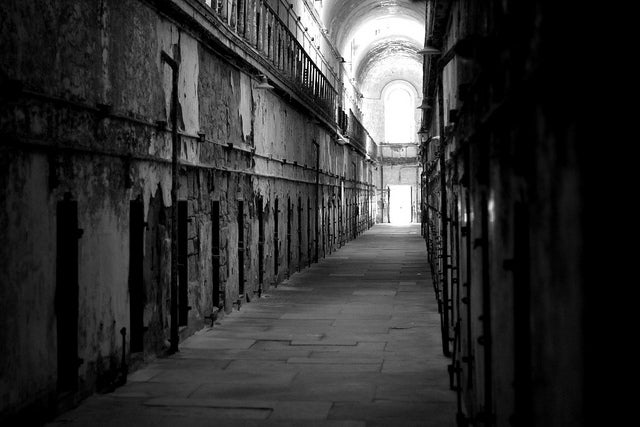Preserving Eastern State Penitentiary

Eastern State Penitentiary gets loads of traffic this time of year thanks to its wildly popular Terror Behind the Walls spooktacular. The haunted-house event is a huge moneymaker for Eastern State and provides much of the site’s operating budget. And, having recently been myself for the first time, it’s good fun. But most of the year Eastern State is a quieter place (much to the relief of Fairmount residents). In the October issue of Philadelphia Magazine, Annie Monjar wonders whether we need to preserve Eastern State Penitentiary. She wonders if planning should trump preservation there, but in so doing she wholly misses what preservation looks like at Eastern State.
Monjar writes, “It would be cynical and obtuse to suggest that Eastern State isn’t a significant enough site for the city to prioritize. But to insist that we fight time, the elements and fickle funding to re-create its entire turn-of-the-century appearance seems, to this newcomer, poor use of civic imagination and energy.” For now, we leave aside the traditional preservation questions of the site’s importance as a place to understand how our society thought about incarceration, or the architectural significance of John Haviland’s plan. Instead, let’s focus on the preservation strategy at Eastern State.
As it stands today, Eastern State Penitentiary is a stabilized ruin. This approach is about working with what you have, in this case stabilizing the buildings, and inviting visitors in to see the prison in its near-romantic decrepitude. Sections of the site, such as the synagogue, are being slowly restored but that’s a selective process rather than a rule. So Monjar is off the mark when she suggests “at the rate it’s going, Eastern State could be a century-long, multi-million dollar project; one that will leave in our midst a fully restored, inoperative 19th-century prison.” To make Eastern State look sparkling and new is a Sisyphean task that probably will never happen. Unlike many a painstakingly restored historic site, Eastern State is not a recreation made up of replacement parts and repackaged as historic and authentic. It’s the real deal.
I applaud Monjar’s instinct to think about new uses for this utterly massive historic site, by perhaps bulldozing crumbling sections and putting a park within the walls. So many historic sites languish because they can’t think of anything better to do with themselves. But Eastern State is already thinking beyond its place as a museum – hence Terror Behind the Walls, Bastille Day, and its art installations. With a bigger budget, could Eastern State become more of a community amenity? Probably, though I’m not sure who wants to hang out in a public space made from a prison yard. (Anyone have an example to prove me wrong on that?) For now, hold your bulldozers, Annie.
WHYY is your source for fact-based, in-depth journalism and information. As a nonprofit organization, we rely on financial support from readers like you. Please give today.





